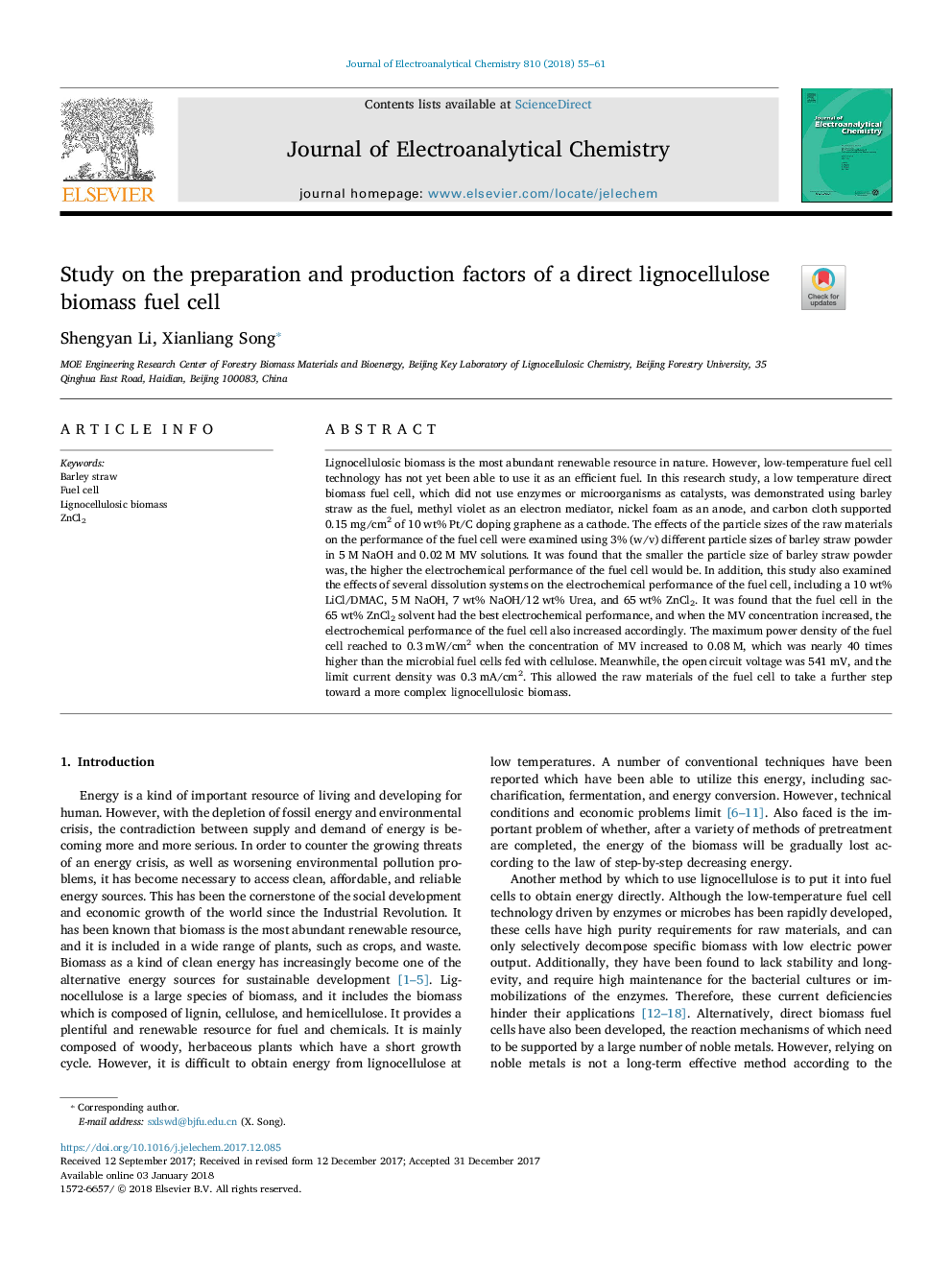ترجمه فارسی عنوان مقاله
مطالعه عوامل تهیه و تولید یک سلول سوختی مستقیم زیست توده لیگنوسلولوز مستقیم
عنوان انگلیسی
Study on the preparation and production factors of a direct lignocellulose biomass fuel cell
| کد مقاله | سال انتشار | تعداد صفحات مقاله انگلیسی |
|---|---|---|
| 138722 | 2018 | 7 صفحه PDF |
منبع

Publisher : Elsevier - Science Direct (الزویر - ساینس دایرکت)
Journal : Journal of Electroanalytical Chemistry, Volume 810, 1 February 2018, Pages 55-61

